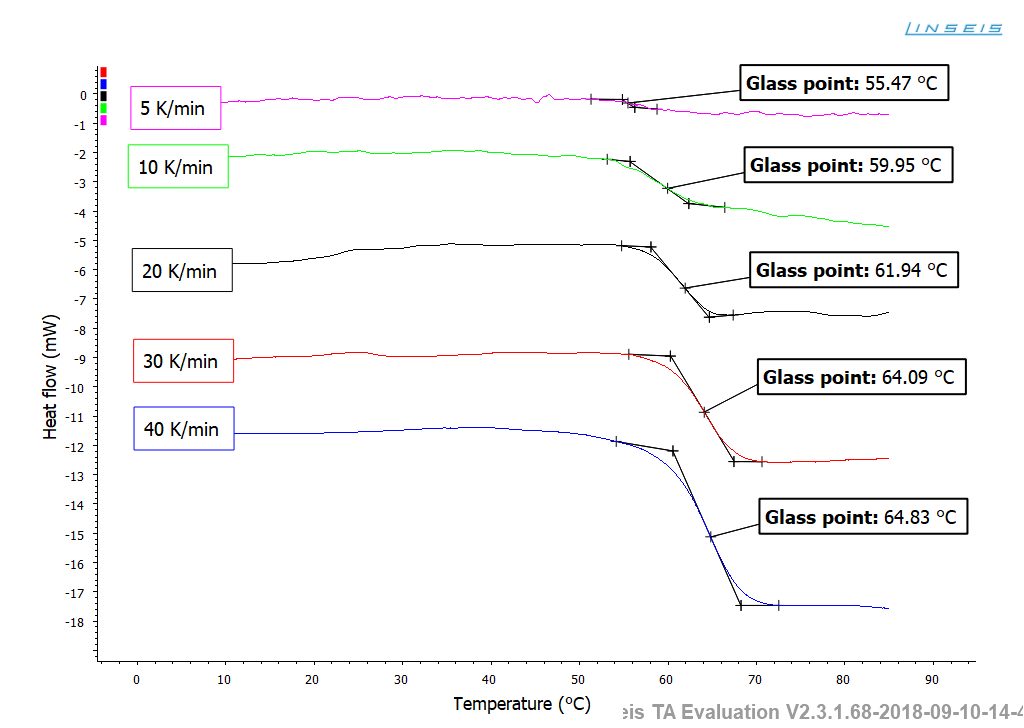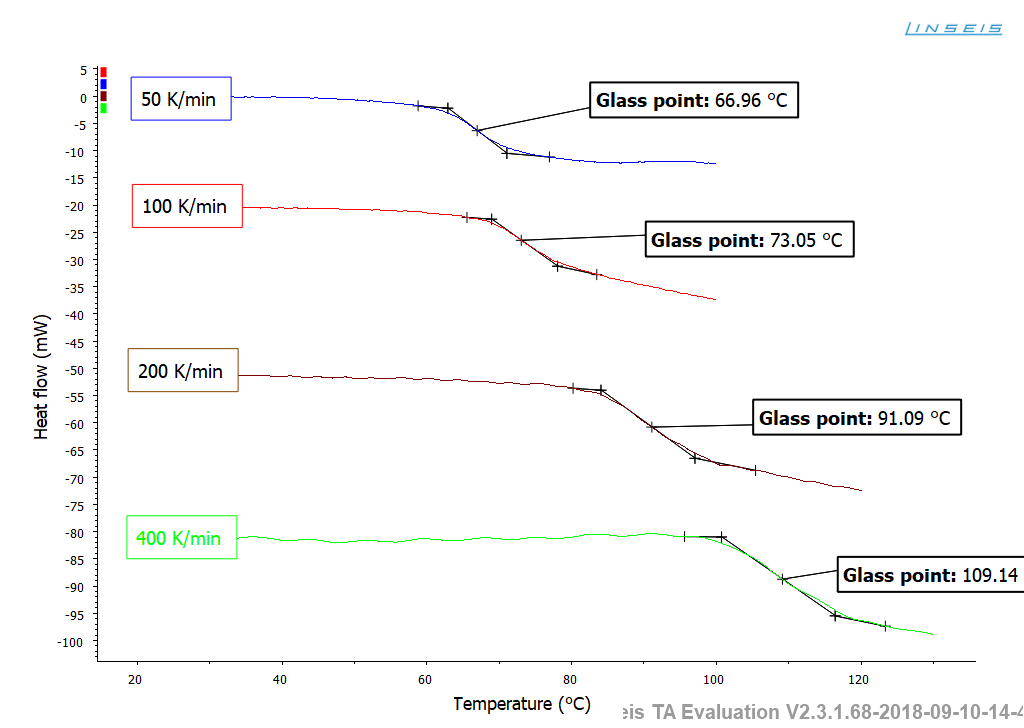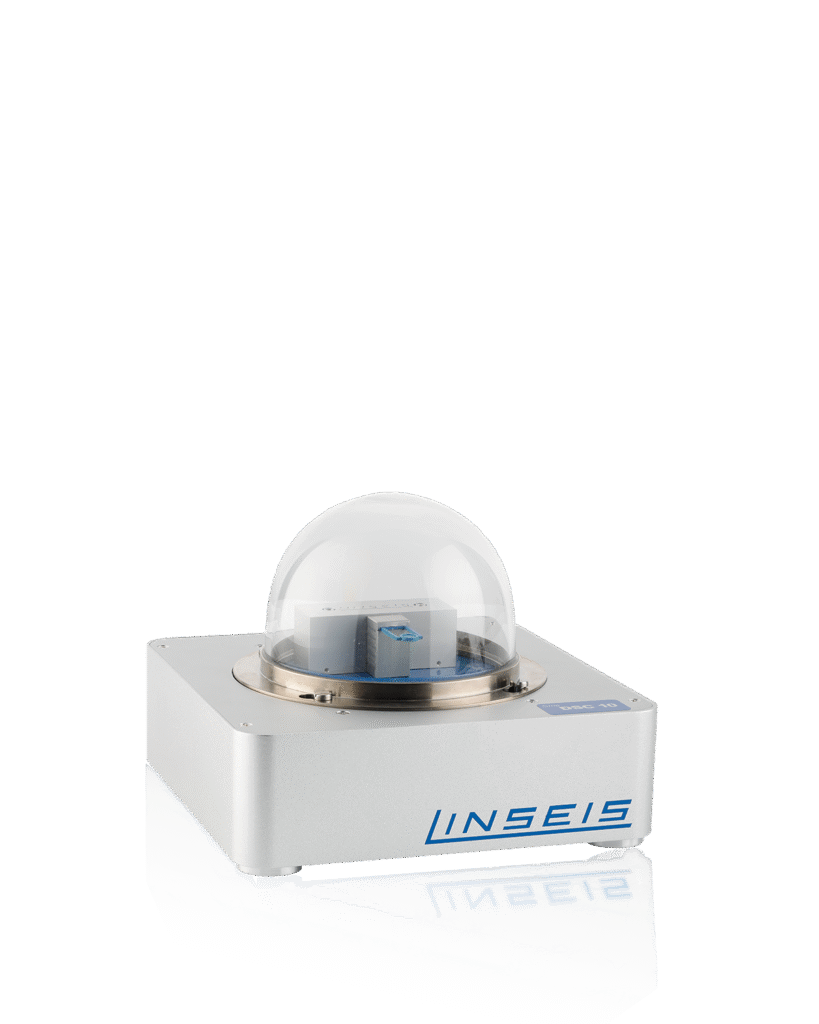The DSC signal in general is generated by heating a pan containing a sample and an empty reference pan using the same heat source. Subtracting the heat flow signals of the two pans from each other, results in endothermic or exothermic peaks if the sample temperature changes due to thermal effects.


In this example skimmed milk powder was analyzed by DSC in the range from -0 to +85 °C. Skimmed milk powder contains approx. 50 % of lactose (“milk sugar”), 36 % of protein and 4 % of residual water. Due to the production process, the lactose is amorphous (“glassy”) and shows a glass transition temperature above room temperature. This glass transition was investigated at different heating rates.
